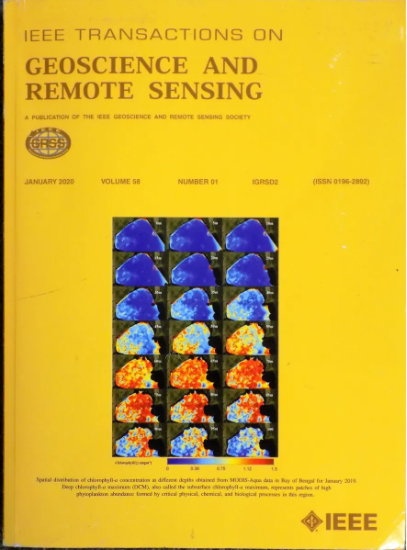用于未知多层环境重建的背投影算法和全波反演协同 GPR 方法
IF 7.5
1区 地球科学
Q1 ENGINEERING, ELECTRICAL & ELECTRONIC
IEEE Transactions on Geoscience and Remote Sensing
Pub Date : 2024-11-18
DOI:10.1109/TGRS.2024.3500588
引用次数: 0
摘要
探地雷达(GPR)已成为地下重建不可或缺的工具,尤其是在复杂的多层基础设施环境中。高效、准确地估计介电常数和地层厚度对理解这些场景至关重要,但这也带来了巨大的挑战。本文探讨了背投影(BP)算法与全波反演(FWI)之间的整合与互动,以优化重建结果。我们提出了一种基于射线的折射方法和一种以高阶矩(HOM)为导向的局部 BP 估计方法,分别从 BP 算法中的 "延迟 "和 "求和 "这两个关键角度来提高效率,重点关注目标层。最重要的是,BP 估计结果为 FWI 提供了可靠的初始模型,降低了局部最小值的风险,减少了迭代次数,从而实现了更精确的参数估计。FWI 还弥补了 BP 算法在估计非目标层参数时的局限性。此外,全波建模(FWM)可在参数估计之前减轻天线效应,从而提高精度。在重建过程中,BP 算法主要生成目标成像,而 FWI 则提供有关层界面的详细信息。这种协同方法充分利用了两种算法的互补优势:BP 算法捕捉 B 扫描中观测到的目标所描述的空间信息,而 FWI 则通过雷达方程将 A 扫描中呈现的详细电磁波沿层界面传播的信息纳入其中。实验使用理想的模拟模型、沙盒实验室数据和比利时道路研究中心(BRRC)设施的道路数据,系统分析了建议方法的准确性和有效性。这项综合评估强调了该方法在高级地球物理勘测和环境研究方面的巨大潜力。本文章由计算机程序翻译,如有差异,请以英文原文为准。
A Synergistic GPR Approach of Back Projection Algorithm and Full-Wave Inversion for Reconstruction in Unknown Multilayered Environments
Ground-penetrating radar (GPR) has become indispensable for subsurface reconstruction, especially in complex, multilayered infrastructure environments. Efficient and accurate estimation of permittivity and layer thickness, crucial for understanding these scenes, presents significant challenges. This article explores the integration and interaction between the back projection (BP) algorithm and full-wave inversion (FWI) to optimize reconstruction outcomes. We propose a ray-based refraction method and a high-order moment (HOM)-oriented local BP estimation, each aimed at improving efficiency from the critical perspectives of “delay” and “summation” in the BP algorithm, respectively, with a focus on the target layer. Crucially, the BP estimation results provide a reliable initial model for FWI, reducing the risk of local minima and decreasing the iteration count for more precise parameter estimation. FWI also compensates for the BP algorithm’s limitations in estimating parameters in nontarget layers. Furthermore, full-wave modeling (FWM) mitigates antenna effects prior to parameter estimation, thereby enhancing accuracy. During reconstruction, the BP algorithm primarily generates target imaging, while FWI provides detailed information about layer interfaces. This synergistic approach leverages the complementary strengths of both algorithms: the BP algorithm captures spatial information depicted by the targets observed in B-scans, while FWI incorporates detailed electromagnetic wave propagation along layer interfaces presented in A-scans via radar equations. Experiments systematically analyze the accuracy and effectiveness of the proposed approach using ideal simulation models, sandbox laboratory data, and road data from the Belgian Road Research Centre (BRRC) facilities. This comprehensive evaluation underscores the approach’s substantial potential in advanced geophysical surveys and environmental research.
求助全文
通过发布文献求助,成功后即可免费获取论文全文。
去求助
来源期刊

IEEE Transactions on Geoscience and Remote Sensing
工程技术-地球化学与地球物理
CiteScore
11.50
自引率
28.00%
发文量
1912
审稿时长
4.0 months
期刊介绍:
IEEE Transactions on Geoscience and Remote Sensing (TGRS) is a monthly publication that focuses on the theory, concepts, and techniques of science and engineering as applied to sensing the land, oceans, atmosphere, and space; and the processing, interpretation, and dissemination of this information.
 求助内容:
求助内容: 应助结果提醒方式:
应助结果提醒方式:


